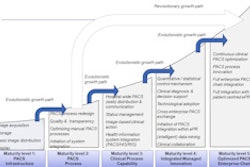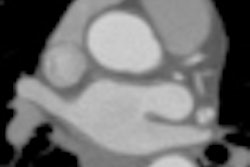Does the implementation of a PACS network reduce the value that referring physicians place on radiologists and their reports? Not necessarily, as long as clinicians perceive that radiologists are still approachable, according to a new study published in Insights into Imaging.
The introduction of PACS and teleradiology has changed the relationship between referring clinicians and hospital radiology departments, with some observers theorizing that the wide dissemination of images could mean that referring physicians are less likely to discuss imaging findings with radiologists.
When three Belfast Trust hospital sites installed PACS, a research group led by Richard Lindsay from the Imaging Centre at Royal Victoria Hospital in Belfast, Northern Ireland, took the opportunity to assess if there was any difference on clinical satisfaction regarding the radiology service (Insights Imaging, 11 May 2011).
In short, they found the answer was no. After sending an Internet-based survey to 316 referring clinicians within the hospital network, they found 70% of the 183 who responded said PACS improved reporting time. And 56% said PACS had improved working patterns for medical staff.
In addition, reports and images were viewed with similar frequency, which suggests radiology reports have not been devalued by PACS, the authors wrote. Also, there was no devaluation of radiology reports with increasing confidence in imaging interpretation among clinicians.
The only factor significantly associated with increased satisfaction was the approachability of radiologists, or the ability to contact radiologists directly, according to the researchers.
"This result is felt to be particularly topical given the changes currently under way in radiology practice worldwide, where there is often a drive to make radiology an 'offsite' specialty," the authors wrote. "With the development of PACS and teleradiology, there is the potential for clinicians to become increasingly distanced from radiologists and less dependent on their reports."
The study findings indicate, however, that clinicians continue to value availability of radiologists with whom they can discuss their patients, according to the researchers.



















